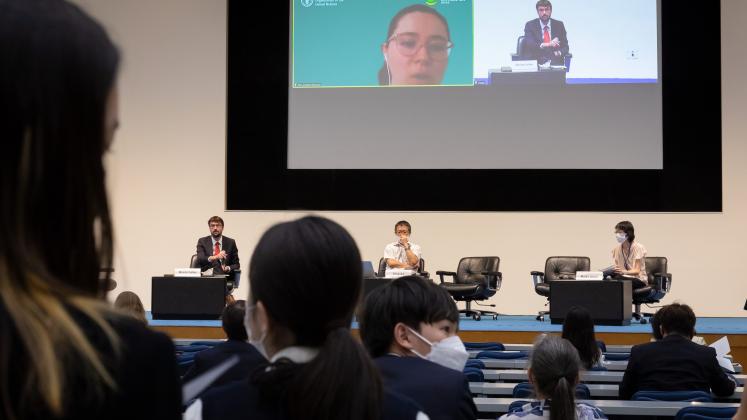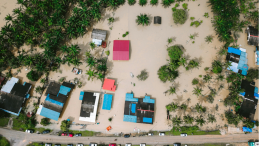On 20 July 2022, a side event of the Climate and SDGs Synergy Conference discussed ecosystem restoration as a nature-based solution that can help address global challenges of biodiversity, climate change, and sustainable development. The event was jointly organised by UNU-IAS, the FAO, and the Secretariat of the Convention on Biological Diversity (CBD).
In opening remarks, Shinobu Yume Yamaguchi (Director, UNU-IAS) noted that the failure to tackle the climate and biodiversity crisis was holding back progress on achieving several of the SDGs. Land degradation and deforestation are among the main drivers, and restoring degraded ecosystems can mitigate climate change and create economic growth.
Maiko Nishi (Research Fellow, UNU-IAS) presented on the interlinkages between biodiversity, health, and sustainability, highlighting the recent UNU-IAS book Biodiversity-Health-Sustainability Nexus in Socio-Ecological Production Landscapes and Seascapes (SEPLS). The book compiles case studies from around the world conducted by members of the International Partnership for the Satoyama Initiative (IPSI).
A presentation by Shizuka Hashimoto (Associate Professor, University of Tokyo) argued that climate measures that fail to consider biodiversity conservation would not halt biodiversity decline. He pointed out that measures such as large-scale monoculture forests, reforestation with non-native tree species, and mega-solar power plants had negative impacts on biodiversity.
Andrea Romero (Consultant, FAO) presented the United Nations Decade on Ecosystem Restoration, a global campaign to prevent, halt and reverse the degradation of ecosystems worldwide. She highlighted the Task Force on Best Practices, which has published the Principles for Ecosystem Restoration and the Global Capacity Needs Assessment, and will create more resources to guide restoration efforts, disseminate knowledge, and assist with capacity development.
David Obura (Director, Coastal Oceans Research and Development in the Indian Ocean - East Africa) discussed ecosystem objectives and restoration targets of the Post-2020 Global Biodiversity Framework (GBF). He explained that the GBF targets under negotiation included increasing the area of natural ecosystems and managing ecosystems sustainably, in addition to establishing protected areas.
In a session moderated by Bruno Leles (Partnership Associate, UNU-IAS), panellists emphasised that to achieve the SDGs we would need holistic approaches centred on a healthy human–nature relationship. In addition, finding synergies between sectors is crucial to establishing long-lasting sustainability strategies.
In closing remarks, Wataru Suzuki (CBD Secretariat) announced that to support developing countries with restoration activities, the CBD Secretariat was implementing the Forest Ecosystem Restoration Initiative (FERI). FERI will deliver an open online course on ecosystem restoration during September–November 2022. He added that the GBF recognises the importance of area-based restoration for biodiversity protection alongside integrated land and seascape planning, conservation, and other effective area-based conservation measures. Both existing efforts — such as FERI and the Satoyama Initiative — and new initiatives are needed to achieve restoration goals.



